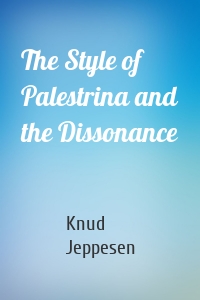Knud Jeppesen
1 кн.
The Style of Palestrina and the Dis...
The greatest Renaissance creator of liturgical music, the revered sixteenth-century composer known as Palestrina wrote works that served for centuries as models of counterpoint. Until The Style of Palestrina and the Dissonance, theoreticians seldom closely analyzed the composer’s work to discover its fundamental elements, including the handling of rhythm, line, and harmony.Beginning chapters discuss the standard use of rhythm and mensuration in Palestrina’s time, the...
| Автор | Knud Jeppesen |


